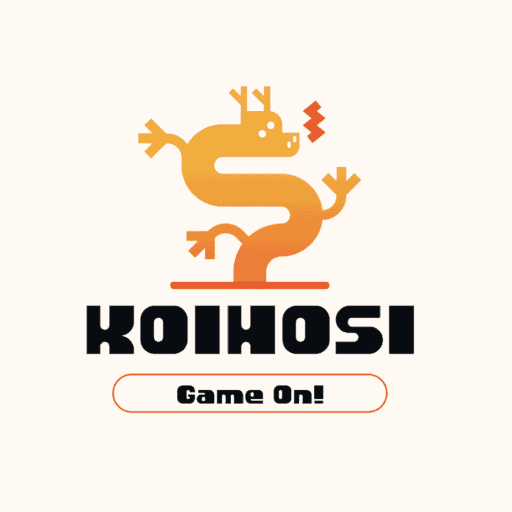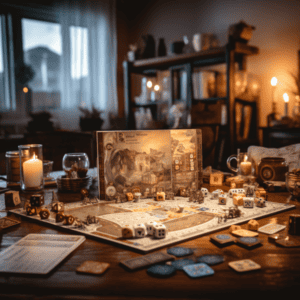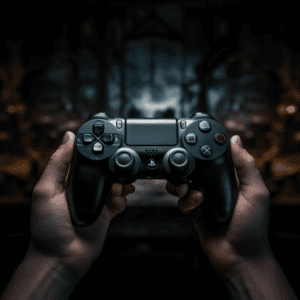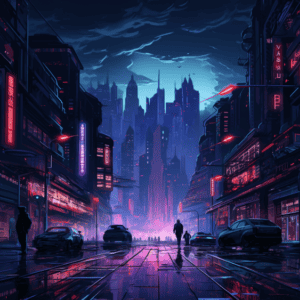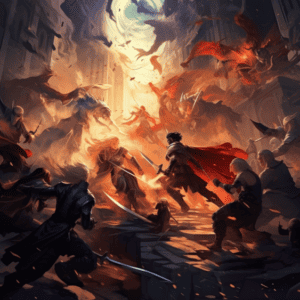Hey fellow art lovers and gamers!
Have you ever wondered how game developers land on that perfect visual style? How do you come up with an art style for a game? As an aspiring artist and JRPG fan, I’ve spent hours admiring and dissecting the graphics of my favorite games. The art direction brings these stories to life and pulls you into captivating worlds. But designing a cohesive look with the right mood, detail, and tone is tricky.
Where do you even begin to conceive the style? After digging into the creative process, I’ve picked up some insights that I can’t wait to share. Whether you’re a pro developer or hobbyist, creating awesome game art requires thoughtful planning and experimentation.
First, consider your game’s genre, story, and audience. Research art styles that might fit the theme. Focus the look with concept art and guidelines. Unify colors, textures, and level of detail. Playtest for feedback. Believe me, with smart decisions along the way, you can craft engaging visuals that boost immersion and bring your gameworld to life. Let’s dive in!
KEY TAKEAWAY
How do you come up with an art style for a game?
Developing an art style for a game requires a combination of experimentation, inspiration, and a deep understanding of the game’s themes and aesthetics (1). Whether through digital or traditional mediums, artists need to explore different styles, moods, and techniques to find the perfect visual language that enhances the game’s narrative and gameplay experience. It’s a process that demands creativity, patience, and a willingness to push boundaries to create a unique and captivating art style that resonates with players.
Importance of a Harmonious Art Style: Aligning Visuals with Gameplay
When crafting a JRPG, having a cohesive art style that fits the gameplay is crucial. As an aspiring game dev, I’ve learned that visuals and mechanics must align to create immersive experiences. Even with a great story, mismatching graphics can ruin engagement.
For JRPGs, the art style sets the tone and draws players into your unique world. A colorful, anime-inspired look signals lighthearted fantasy and encourages exploration. Darker realistic graphics fit a gritty narrative. Stylized retro pixel art evokes nostalgia.
Technical factors like camera perspective and level of detail also tie back to the core gameplay. Is it an overhead tactical game or third-person adventure? Complex textures or clean lines? The art direction should complement the intended gameplay flow.
Most importantly, the visuals need to support key JRPG elements like battles, progression, and environments without being distracting. Consistent interfaces, expressive characters, and legible maps help players stay focused on strategy, not struggling with graphics.
Take time to ensure your JRPG’s art aligns with the narrative, mechanics, and technical gameplay factors. Cohesion makes for captivating experiences. Let your visuals elevate the core ideas!
Key Issues in Defining Game Art Styles: Avoiding Pitfalls

When deciding on your game’s graphics (2), watch out for some key pitfalls! As a hobbyist developer, I’ve learned to avoid these art direction issues that can derail projects:
Beware an unfocused look with too many conflicting elements. Inconsistency breaks immersion quickly. Start with a cohesive style guide and core palette.
Don’t let technical limitations drive the art. Focus on the aesthetic vision first, then problem-solve execution.
Avoid going too minimalist or overly busy with details. Distraction or confusion slows the gameplay loop.
Don’t completely mimic a trendy art style without adding your own spin. Lean into what makes your world unique!
Watch that character designs match backgrounds and environments in style. Jarring mismatches ruin cohesion.
By pinpointing these potential issues early and correcting course, you can settle on a harmonious art direction. Stay focused, consistent, and true to your creative goals!
Choosing Art Styles for Specific Game Genres: Deck-Building Strategy with Autochess Elements

When fusing genres like deck-building strategy with autochess, art style choices become especially crucial. As an aspiring developer, I’ve learned some key considerations:
Vibrant colors and varied character design are essential so players can easily distinguish unit types at a glance for strategic purposes. Clean interfaces also help legibility.
On the other hand, too much complexity can overwhelm new players. Stylized designs with slightly exaggerated shapes help identify roles and stats quickly.
Perspective and camera angle need to provide clear views of the board state for tactical gameplay. But dynamic camera movements also boost engagement during battles.
Environment artwork should complement the core mechanics without being distracting. Simple backgrounds keep the focus on the units and gameplay.
Balancing visual information, theming, tone, and ease of reading board state is key. For hybrid genres, let the mechanics guide smart art choices!
The Significance of Artwork in Game Perception: Beyond Gameplay Mechanics
It’s easy to focus solely on gameplay when developing a game. But art often shapes perception just as much! As a gamer and developer, I’ve noticed how impactful visual presentation is.
Attractive graphics raise interest and expectations even before playing. A compelling art style suggests creativity and effort went into worldbuilding. First impressions matter.
During gameplay, art draws you into the moment-to-moment experience. Seamless style and animation make mechanics feel smooth. Good graphics increase immersion.
Additionally, artwork conveys non-mechanical aspects like mood, tone, and storytelling. The developer’s craft shines through.
Sure, engaging mechanics are important – but don’t underestimate the value of striking, cohesive visuals. They influence reputation, enjoyment, and staying power hugely.
More on is Final Fantasy a JRPG or western RPG.
Art Style Integration with Gameplay: Letting the Core Experience Lead
When developing a cohesive art style, remember to let the intended gameplay drive the direction. The visual presentation should integrate seamlessly with the core mechanics and flow.
Consider pacing and perspective needs based on the genre and interactions. An action platformer requires clear character animations and environments to time jumps. A city builder needs recognizable structures from a bird’s-eye view.
Similarly, augment the style to highlight interactive elements. Draw the eye to resources, enemies, collectibles, and points of interest. Color coding and visual hierarchies help players engage.
Artistry of course allows self-expression! But avoid superfluous elements that distract from the main gameplay loop. Reinforce through visuals, don’t obstruct.
Make sure technical factors like platform capabilities or multiplayer demands are considered too. Optimize graphics to run smoothly without sacrificing your vision.
Most importantly, let the gameplay experience lead, then leverage art for enhancement. When aligned, they create magical engagement that makes players forget the world outside.
I hope these tips help you craft incredible, harmonious visuals for your games! Share your works in progress – I’d love to see what spectacular art styles you dream up. Let your vision guide the graphics to match the core experience.
More on which JRPG has the best art style.
Conclusion
Now you’ve got my best tips for honing an incredible art style for your game idea. Take time to brainstorm, gather inspiration, and refine the look that fits your vision. Stay open to feedback from your team and community too – you never know what elements could take it to the next level. most importantly, keep practicing new techniques and studying other great games.
Amazing art direction takes dedication, but the creative reward is so fulfilling. I can’t wait to see what unique styles and worlds you dream up! Share your works in progress using #GameArtTips. Let’s build an encouraging community of indie developers and artists. With the right focus and passion, you can craft visuals that truly transport and captivate. Get out there and start bringing your game’s beautiful concept art to life!
More on what are the characteristics of JRPG art style.
References
- https://www.linkedin.com/advice/1/how-do-you-create-consistent-immersive-game-art-style#:~:text=The%20first%20step%20to%20creating,mechanics%2C%20and%20your%20narrative%20goals.
- https://medium.com/spacesheep-art-design/how-to-define-the-art-style-for-a-game-2bcbb683b9d7
